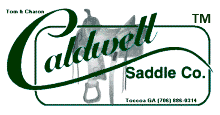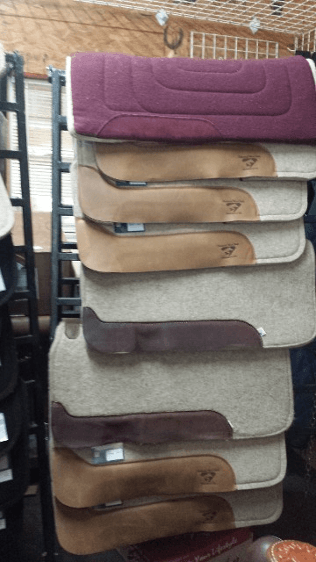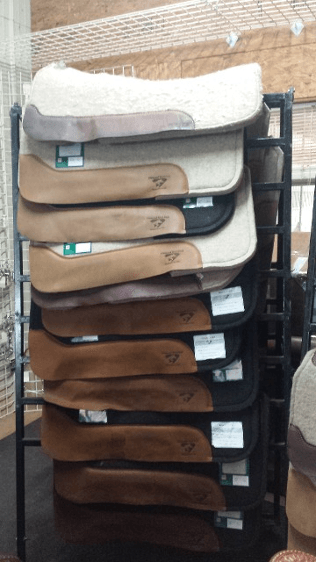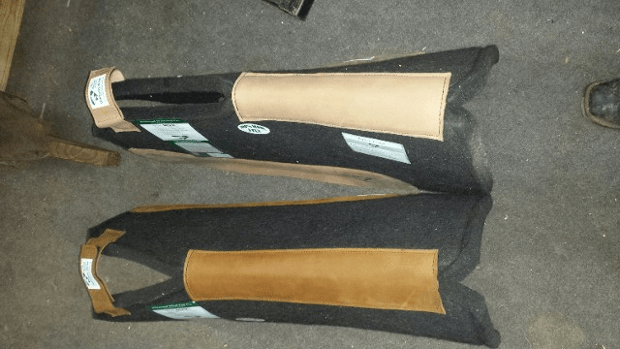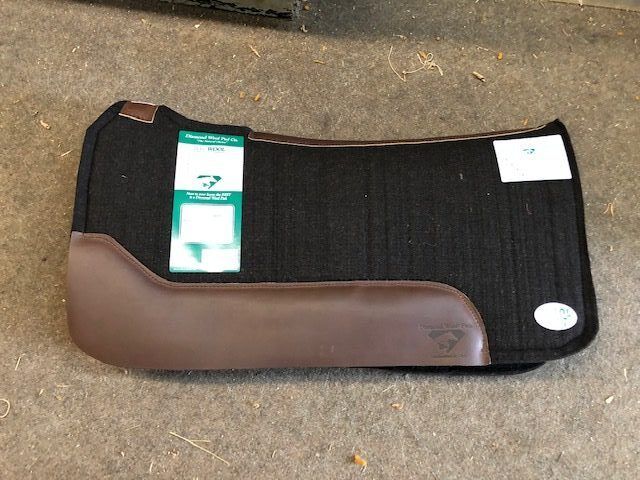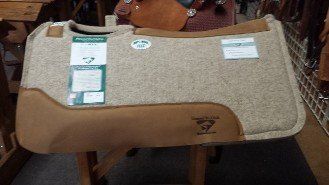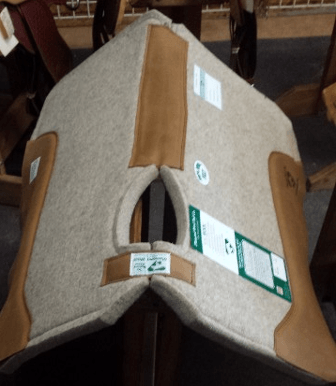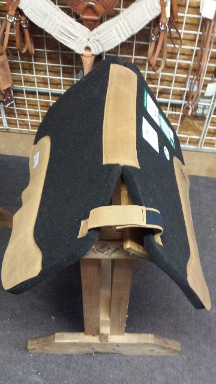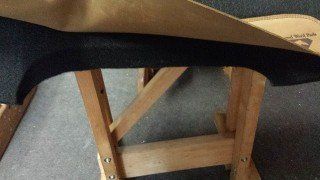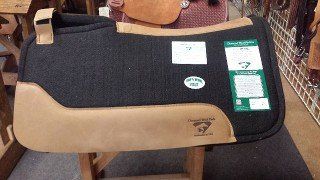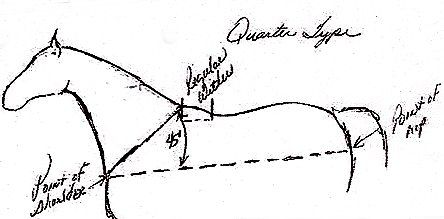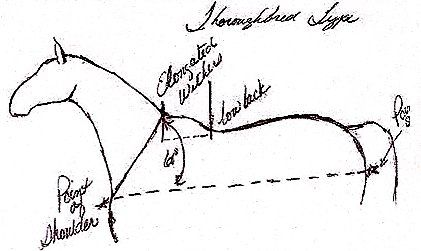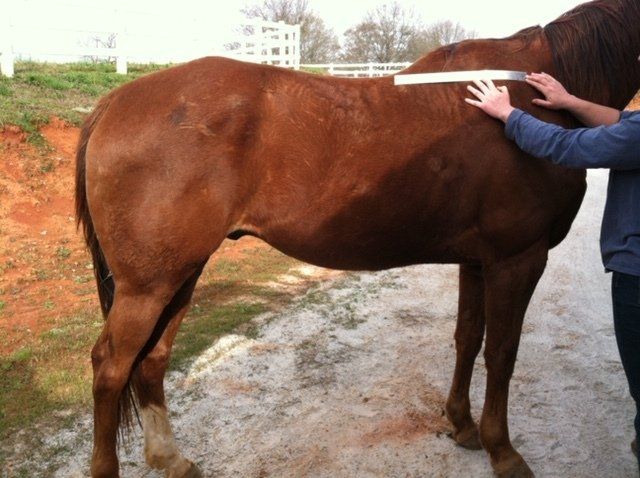This horse has a back that can be considered 'weird' and hard to properly fit. As a result, he requires a custom saddle pad. He is extremely straight shouldered (about 80°), long withered, and low-backed.
When customizing a pad for this horse, the idea was to “make the back as normal as possible” with the use of either a Black Gold pad (by Diamond Wool), or one that was cut like it. There are instructions on the site that will walk you through modifying your saddle pad, look under the “Tips” section. I designed the Black Gold pad because there were not many pads that worked for a high withered and low-backed horse. This pad is designed to fill in the low back and go around (not over) the withers.
Why should you pad up another inch over withers that are already high? The adjustable wither strap on the Black Gold pad holds the pad in place without a build up of excess padding. From the front edge of the pad to the base of the original cut out is designed to measure 10 inches. I thought this would work for most horses with long withers and low backs, however, the bay in the picture above, “Scar”, has withers that measure 14 inches to the point where the withers and back meet. This long measurement means that he needs a deeper cut out in his pad in order to accommodate his withers.
Why is this important to do? If you have a crappy saddle with straight bars, it would not matter because only the outer edges of the bar will touch the horse and you will be sitting 6 inches above his back. But with the pad laying over the “blade” portion (the ridge between the highest point of his withers to where it joins the back) in a good, close contact saddle, the added thickness of the pad will cause the blade ridge to rub on the underside of the seat. By cutting this area out, it will add another inch of clearance. Any contact your saddle has with any area along the spine is detrimental to your horse. We have done this modification for dozens of horses, so it is not uncommon. The cut out amount is approximately 3 to 4 inches. Another issue with not cutting this area for those that need it is related to the slope of the wither blade. As he runs, the wither blade will hit the underside of the saddle and cause it to slide back, making folks think that it is the saddle that does not properly fit the horse.
These horses have a wither as long as their backs. So we have angled the front edge back to free up the neck adjoining the withers to stop mane rubbing and prevent the pad from being pushed back when the animal raises his neck and head. Also, we have cut the relief slot along the front of the spine to allow the extended blade portion to fit through the hole so the raised bone does not hit the underside of the ground seat and shove the saddle backwards.
